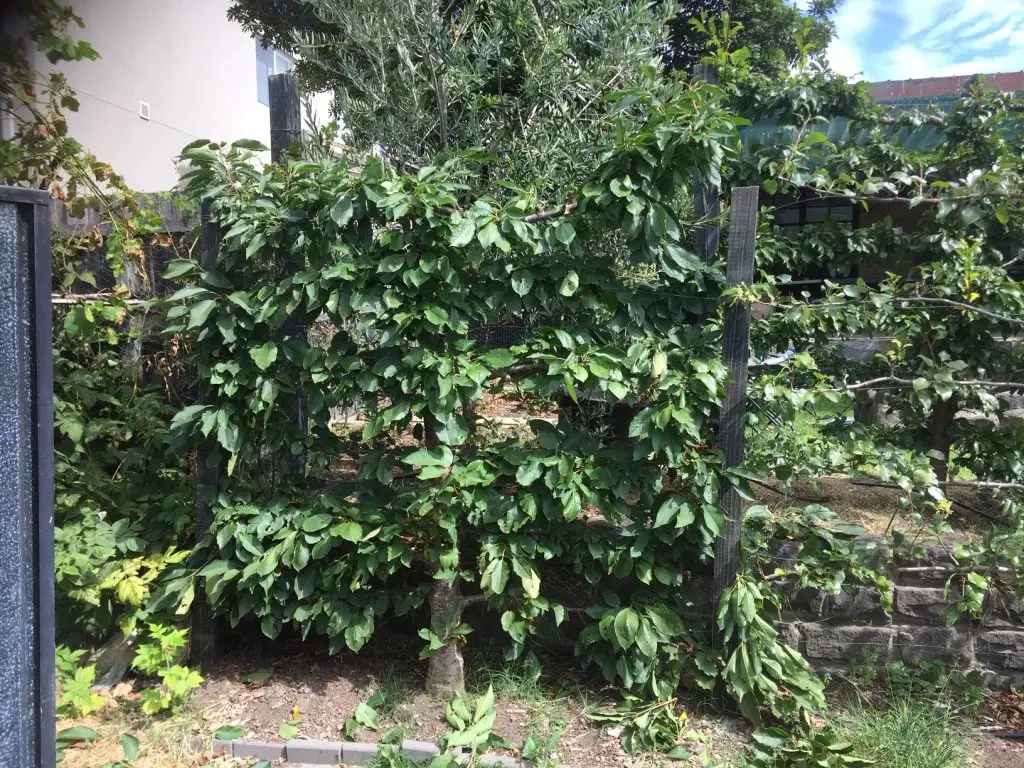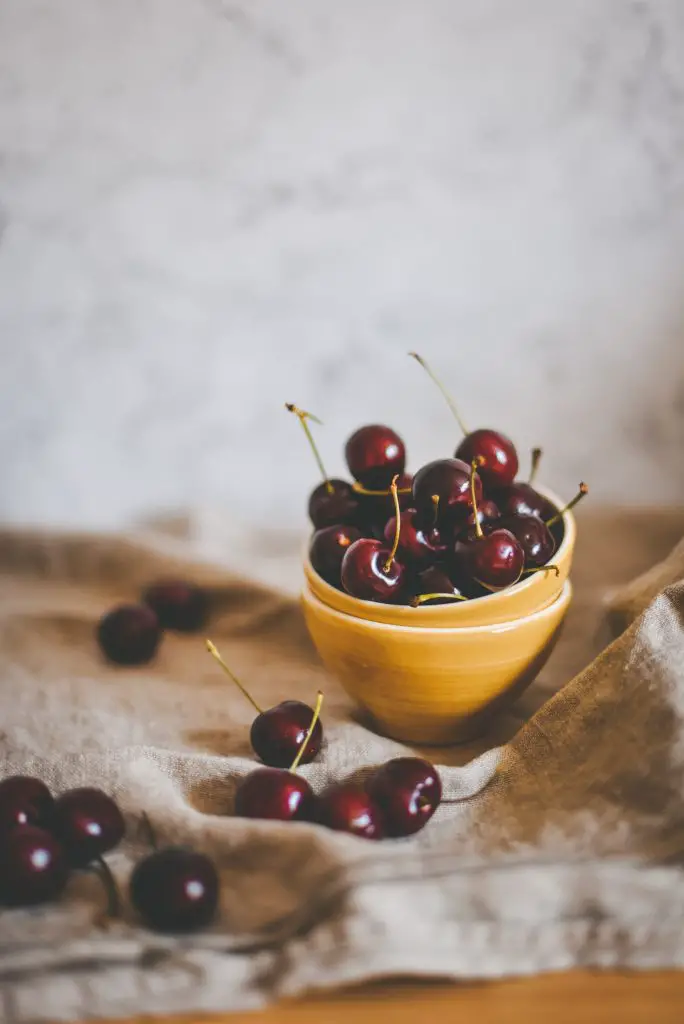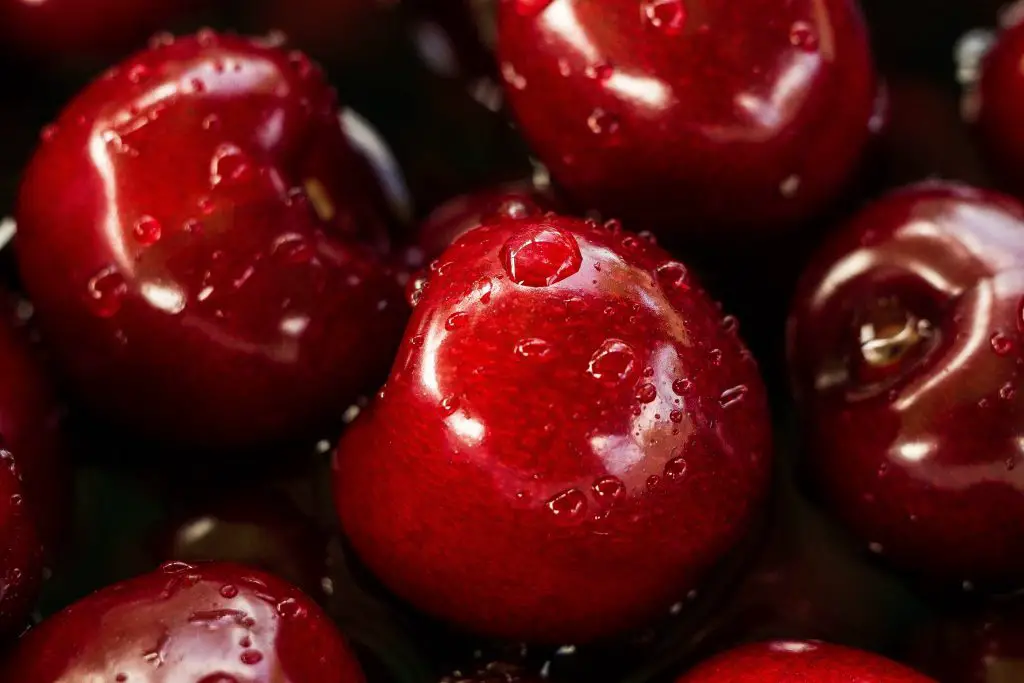How Many cherries Does A Tree Produce? Cherry trees are one of the most sort-after stone fruit at the grocery store. However, they are also one of the most expensive to buy due to the high labor costs associated with the harvesting of the fruit. This makes the growing of a Cherry tree an attractive option, but how much do Cherry trees really produce, and is it worth planting one?
A mature commercial Cherry tree, which is around 15 years old, will produce around 880 lbs (400 kg) of fruit in a season, according to one Spanish study. This equates to around 4000 fruit per season which will arrive usually in the first weeks of summer but the fruiting season is relatively short only lasting a few weeks. To produce a harvest of that size a tree that is relatively large is required, 15 to 35 ft tall is not uncommon.
However, for most people that live in an urban setting devoting a large volume of space to a single fruit tree that produces masses of fruit over an extremely short period is not that useful. Additionally, it is extremely difficult for the home gardener to actually harvest even a small portion of the fruit on the tree. This is because a large portion of the fruit is inaccessible due to the height of the tree and it is also impossible to net the tree which means that the birds will often beat you to the fruit.
The far more practical approach is to train the tree onto a support system as this will make it much easier to harvest the fruit and reduce the volume of space required for the tree. Research by the University of Zagreb has shown that training a cherry tree onto a support system improves the yield per square foot. However, due to the reduction in the size of the tree the yield per tree was typically around 22 lbs (10 kg).
The training system I use at home is a T-Shaped espalier which allows the branches to be tied down to horizontal wires that are approximately 1 ft (30 cm) apart. Creating this type of shape is easy to do, when the tree is first planted cut the main leader at the height of the first tier of the support structure in winter. This cut, in most cases, will stimulate the tree to produce 3 new stems. The new stems on either side of the central stem can be tied down onto the horizontal wires to create the first tier of the espalier. This process is repeated every year until the desired height is reached.
This makes netting the whole tree a quick and easy job, an example of an espaliered cherry from my own yard is shown in the picture below.

How Long Does It Take For A Cherry Trees To Produce Fruit?
Most Cherry trees are slower to fruit than other stone fruit trees, such as apricots and plums, but they are also long-lived. Typically, a Cherry tree will not produce any fruit at all for at least 3 years and sometimes longer. Additionally, the first harvests tend to be relatively small and it can take up to 8 or 9 years for the cropping on the tree to really get going. However, once the trees get going they can become quite prolific produces of fruit.
Cherry trees will typically live for around 30 to 40 years and sometimes longer, whereas many other stone fruit will only last around 20 years.
Which Climates Are Suitable For Cherry Trees?
Cherry trees are suitable for growing in zones 3 to 10, however, there are some limitations to this. Sour Cherry varieties are the most cold-tolerant varieties largely because they flower later than Sweet Cherry varieties. This limits the damage that can occur as a result of late frosts. Suitable varieties for zone 3 include Cupid Cherry, Carmine Jewel Cherry and Evans Cherry.
Whereas Sweet Cherry varieties can only tolerate temperatures of around -20°F (-28°C) which generally makes them suitable for Zone 5 and upward. However, the choice of varieties in zones is also limited by the Chill Hours required by a given variety.
Cherry trees, and all stone fruit, need to be exposed to temperatures below 45°F (7°C) in order to fruit successfully. The amount of time, which is sometimes referred to as chill hours varies depending upon the particular cultivar, which is shown in the table below.
| Chill Rating | Chill Hours | Examples Of Varieties |
| Low | 300‐500 | Brooks |
| low‐Moderate | 500‐750 | Lapins |
| Moderate‐high | 750‐1000 | Lapins, Sweetheart |
| High | 1000‐1500 | Sweetheart, Korida |
If this seems all too complex don’t worry there are a couple of simple strategies you can use to narrow down the Cherry variety to grow. The first is to simply have a chat to the local plant store. The varieties they are stocking will be suitable for your region, or alternatively, visit your local garden club to find out what varieties are being grown in your local area by other gardeners.
The other way is to estimate the number of chill hours in your location. To estimate this take the average temperature in your coldest month and compare it to the table provided below. With this information, you can look up varieties that fall within the right range for chill hours.
Chill Hours Average Temperature For Coldest Month
0 19.7°C (67.5°F) – No Chill
300 15.5°C (59.9°F) – Low Chill
330 15.3°C (59.5°F) – Low Chill
450 14.0°C (57.2°F) – Medium Chill
500 13.6°C (56.5°F) – Medium Chill
520 13.1°C (55.6°F) – Medium Chill
600 12.7°C (54.9°F) – Medium to High Chill
800 10.2°C (50.4°F) – High Chill
1100 7.9°C (46.2°F) – High Chill
1250 0.0°C (32.0°F) – Very High Chill
Do You Need More Than One Cherry Tree To Produce Fruit?
The need for a second tree for cross-pollination is dependent upon the variety. Sour cherry varieties are self-pollinated which means that they do not require more than one tree to produce the fruit. However, if you plant a sweet variety a second tree is required in most cases to get fruit but there are some exceptions to this. Varieties such Stella, which I have in my own yard can self-pollinate.

However, even though some varieties are self-pollinated they will still benefit from the presence of a second tree. This because it generally improves the degree of pollination and therefore increases the yield from the tree.
How To Plant A Cherry Tree
Cherry trees are best planted in late winter however, this is sometimes not practical if you live in a really cold climate where the ground freezes solid. In these cases, it may necessary to plant the trees a little later in the season.
The benefit of planting at this time of year is that trees can be purchased bare-rooted. Bare-rooted trees are usually significantly cheaper than potted trees. Additionally, it is common for retailers to reduce the price of these trees at the end of the bare-rooted season to help clear stock, so it is possible to pick up a real bargain.
Once the tree has been purchased the next step is to select a location to plant the tree. Ideally, Cherry trees should be planted in a warm sunny location that gets at least 8 hours of sun per day. However, if you are in a situation where your climate is on the border of being either too hot or cold for a particular variety, clever selection of a location can make a really big difference to how the tree performs.
In cases where you ideally need additional heat select a south-facing location (in the northern hemisphere), that is next to a brick wall as this will reduce the minimum temperature at night that the tree is exposed to. Alternatively, if your conditions are a little warm try to select a location that is shaded in the morning and only gets afternoon temperature. This will ensure that the tree remains in the shade during the coldest part of the day maximizing the tree’s chill hours.
The next important consideration is the quality of the soil, Cherry trees generally do not like wet feet. They prefer a well-drained soil that contains plenty of organic matter and is slightly acidic, a pH of 6.5 to 7.0 is ideal. To check the soil it is easiest to use a pH meter rather than pH strips and they usually provide a more accurate result. They are also lower in cost than pH kits, click here to see the latest price on Amazon.
Once the soil is prepared dig a hole and position the tree. The depth of the tree should be approximately the same depth as it had been previously been planted at. It is also important to make sure that the graft union of the tree is around 2 inches above the ground to avoid the root-stock producing suckers.
Once the tree is positioned back-fill the hole with soil, firming the soil in as you go to ensure that there are no air pockets. Water the tree in well and then apply a thick layer of organic mulch, 2 to 4 inches is ideal. At this stage it is important to make sure that the mulch does not come into contact with the trunk, to avoid collar rot.

Once planted the tree should be pruned aggressively to reduce the size by around half. Ideally, cut above an outward-facing bud to encourage the formation of a vase-like structure that is open and will allow light and air into the center of the tree.
In the following seasons, any inward-facing branches need to be removed to maintain the desired shape. You will also need to reduce the height of the tree aggressively, to do this it is best to cut 1 to 2 ft (30 to 60 cm) above forks in branches to encourage the tree to continue to develop a vase-like structure.
